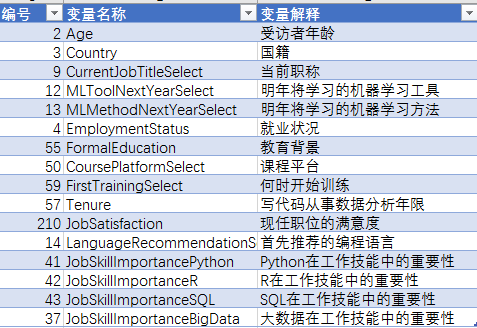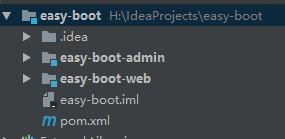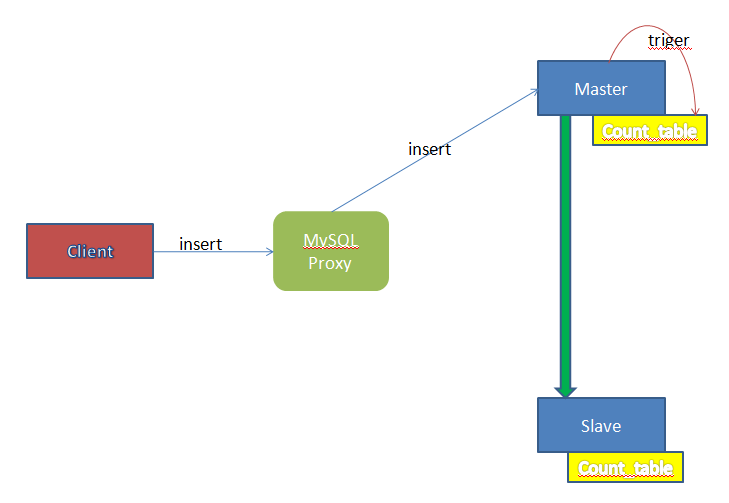转自: http://blog.csdn.net/xiangwanpeng/article/details/54802509
(使用特定的realm实现特定的验证)
假设现在有这样一种需求:存在两张表user和admin,分别记录普通用户和管理员的信息。并且现在要实现普通用户和管理员的分开登录,即需要两个Realm——UserRealm和AdminRealm,分别处理普通用户和管理员的验证功能。
但是正常情况下,当定义了两个Realm,无论是普通用户登录,还是管理员登录,都会由这两个Realm共同处理。这是因为,当配置了多个Realm时,我们通常使用的认证器是shiro自带的org.apache.shiro.authc.pam.ModularRealmAuthenticator,其中决定使用的Realm的是doAuthenticate()方法,源代码如下:
protected AuthenticationInfo doAuthenticate(AuthenticationToken authenticationToken) throws AuthenticationException {assertRealmsConfigured();Collection<Realm> realms = getRealms();if (realms.size() == 1) { return doSingleRealmAuthentication(realms.iterator().next(), authenticationToken); } else { return doMultiRealmAuthentication(realms, authenticationToken); } }这段代码的意思是:当只有一个Realm时,就使用这个Realm,当配置了多个Realm时,会使用所有配置的Realm。
现在,为了实现需求,我会创建一个org.apache.shiro.authc.pam.ModularRealmAuthenticator的子类,并重写doAuthenticate()方法,让特定的Realm完成特定的功能。如何区分呢?我会同时创建一个org.apache.shiro.authc.UsernamePasswordToken的子类,在其中添加一个字段loginType,用来标识登录的类型,即是普通用户登录,还是管理员登录。具体步骤如下:
第一步:创建枚举类LoginType用以记录登录的类型:
//登录类型 //普通用户登录,管理员登录 public enum LoginType {USER("User"), ADMIN("Admin");private String type;private LoginType(String type) {this.type = type;}@Overridepublic String toString() {return this.type.toString();} }
第二步:新建org.apache.shiro.authc.UsernamePasswordToken的子类CustomizedToken:
import org.apache.shiro.authc.UsernamePasswordToken;public class CustomizedToken extends UsernamePasswordToken {//登录类型,判断是普通用户登录,教师登录还是管理员登录private String loginType;public CustomizedToken(final String username, final String password,String loginType) {super(username,password);this.loginType = loginType;}public String getLoginType() {return loginType;}public void setLoginType(String loginType) {this.loginType = loginType;} }
第三步:新建org.apache.shiro.authc.pam.ModularRealmAuthenticator的子类CustomizedModularRealmAuthenticator:
import java.util.ArrayList; import java.util.Collection;import org.apache.shiro.authc.AuthenticationException; import org.apache.shiro.authc.AuthenticationInfo; import org.apache.shiro.authc.AuthenticationToken; import org.apache.shiro.authc.pam.ModularRealmAuthenticator; import org.apache.shiro.realm.Realm;/*** @author Alan_Xiang * 自定义Authenticator* 注意,当需要分别定义处理普通用户和管理员验证的Realm时,对应Realm的全类名应该包含字符串“User”,或者“Admin”。* 并且,他们不能相互包含,例如,处理普通用户验证的Realm的全类名中不应该包含字符串"Admin"。*/ public class CustomizedModularRealmAuthenticator extends ModularRealmAuthenticator {@Overrideprotected AuthenticationInfo doAuthenticate(AuthenticationToken authenticationToken)throws AuthenticationException {// 判断getRealms()是否返回为空 assertRealmsConfigured();// 强制转换回自定义的CustomizedTokenCustomizedToken customizedToken = (CustomizedToken) authenticationToken;// 登录类型String loginType = customizedToken.getLoginType();// 所有RealmCollection<Realm> realms = getRealms();// 登录类型对应的所有RealmCollection<Realm> typeRealms = new ArrayList<>();for (Realm realm : realms) {if (realm.getName().contains(loginType))typeRealms.add(realm);}// 判断是单Realm还是多Realmif (typeRealms.size() == 1)return doSingleRealmAuthentication(typeRealms.iterator().next(), customizedToken);elsereturn doMultiRealmAuthentication(typeRealms, customizedToken);}}
第四步:创建分别处理普通用户登录和管理员登录的Realm:
UserRealm:import javax.annotation.Resource;import org.apache.shiro.authc.AuthenticationException; import org.apache.shiro.authc.AuthenticationInfo; import org.apache.shiro.authc.AuthenticationToken; import org.apache.shiro.authc.SimpleAuthenticationInfo; import org.apache.shiro.authc.UnknownAccountException; import org.apache.shiro.authz.AuthorizationInfo; import org.apache.shiro.realm.AuthorizingRealm; import org.apache.shiro.subject.PrincipalCollection; import org.apache.shiro.util.ByteSource;import com.ang.elearning.po.User; import com.ang.elearning.service.IUserService;public class UserRealm extends AuthorizingRealm {@ResourceIUserService userService;@Overrideprotected AuthorizationInfo doGetAuthorizationInfo(PrincipalCollection principals) {return null;}@Overrideprotected AuthenticationInfo doGetAuthenticationInfo(AuthenticationToken token) throws AuthenticationException {User user = null;// 1. 把AuthenticationToken转换为CustomizedTokenCustomizedToken customizedToken = (CustomizedToken) token;// 2. 从CustomizedToken中获取emailString email = customizedToken.getUsername();// 3. 若用户不存在,抛出UnknownAccountException异常user = userService.getUserByEmail(email);if (user == null)throw new UnknownAccountException("用户不存在!");// 4.// 根据用户的情况,来构建AuthenticationInfo对象并返回,通常使用的实现类为SimpleAuthenticationInfo// 以下信息从数据库中获取// (1)principal:认证的实体信息,可以是email,也可以是数据表对应的用户的实体类对象Object principal = email;// (2)credentials:密码Object credentials = user.getPassword();// (3)realmName:当前realm对象的name,调用父类的getName()方法即可String realmName = getName();// (4)盐值:取用户信息中唯一的字段来生成盐值,避免由于两个用户原始密码相同,加密后的密码也相同ByteSource credentialsSalt = ByteSource.Util.bytes(email);SimpleAuthenticationInfo info = new SimpleAuthenticationInfo(principal, credentials, credentialsSalt,realmName);return info;}}AdminRealm:import javax.annotation.Resource;import org.apache.shiro.authc.AuthenticationException;import org.apache.shiro.authc.AuthenticationInfo; import org.apache.shiro.authc.AuthenticationToken; import org.apache.shiro.authc.SimpleAuthenticationInfo; import org.apache.shiro.authc.UnknownAccountException; import org.apache.shiro.authz.AuthorizationInfo; import org.apache.shiro.realm.AuthorizingRealm; import org.apache.shiro.subject.PrincipalCollection; import org.apache.shiro.util.ByteSource;import com.ang.elearning.po.Admin; import com.ang.elearning.service.IAdminService;public class AdminRealm extends AuthorizingRealm {@Resourceprivate IAdminService adminService;@Overrideprotected AuthorizationInfo doGetAuthorizationInfo(PrincipalCollection principals) {// TODO Auto-generated method stubreturn null;}@Overrideprotected AuthenticationInfo doGetAuthenticationInfo(AuthenticationToken token) throws AuthenticationException {Admin admin = null;// 1. 把AuthenticationToken转换为CustomizedTokenCustomizedToken customizedToken = (CustomizedToken) token;// 2. 从CustomizedToken中获取usernameString username = customizedToken.getUsername();// 3. 若用户不存在,抛出UnknownAccountException异常admin = adminService.getAdminByUsername(username);if (admin == null)throw new UnknownAccountException("用户不存在!");// 4.// 根据用户的情况,来构建AuthenticationInfo对象并返回,通常使用的实现类为SimpleAuthenticationInfo// 以下信息从数据库中获取// (1)principal:认证的实体信息,可以是username,也可以是数据表对应的用户的实体类对象Object principal = username;// (2)credentials:密码Object credentials = admin.getPassword();// (3)realmName:当前realm对象的name,调用父类的getName()方法即可String realmName = getName();// (4)盐值:取用户信息中唯一的字段来生成盐值,避免由于两个用户原始密码相同,加密后的密码也相同ByteSource credentialsSalt = ByteSource.Util.bytes(username);SimpleAuthenticationInfo info = new SimpleAuthenticationInfo(principal, credentials, credentialsSalt,realmName);return info;}}
第五步:在spring配置文件中指定使用自定义的认证器:(其他配置略)
<!-- 配置SecurityManager --><bean id="securityManager" class="org.apache.shiro.web.mgt.DefaultWebSecurityManager"><property name="cacheManager" ref="cacheManager" /><property name="authenticator" ref="authenticator"></property><!-- 可以配置多个Realm,其实会把realms属性赋值给ModularRealmAuthenticator的realms属性 --><property name="realms"><list><ref bean="userRealm" /><ref bean="adminRealm"/></list></property></bean><!-- 配置使用自定义认证器,可以实现多Realm认证,并且可以指定特定Realm处理特定类型的验证 --><bean id="authenticator" class="com.ang.elearning.shiro.CustomizedModularRealmAuthenticator"><!-- 配置认证策略,只要有一个Realm认证成功即可,并且返回所有认证成功信息 --><property name="authenticationStrategy"><bean class="org.apache.shiro.authc.pam.AtLeastOneSuccessfulStrategy"></bean></property></bean><!-- 配置Realm --><bean id="userRealm" class="com.ang.elearning.shiro.UserRealm"><!-- 配置密码匹配器 --><property name="credentialsMatcher"><bean class="org.apache.shiro.authc.credential.HashedCredentialsMatcher"><!-- 加密算法为MD5 --><property name="hashAlgorithmName" value="MD5"></property><!-- 加密次数 --><property name="hashIterations" value="1024"></property></bean></property></bean><bean id="adminRealm" class="com.ang.elearning.shiro.AdminRealm"><!-- 配置密码匹配器 --><property name="credentialsMatcher"><bean class="org.apache.shiro.authc.credential.HashedCredentialsMatcher"><!-- 加密算法为MD5 --><property name="hashAlgorithmName" value="MD5"></property><!-- 加密次数 --><property name="hashIterations" value="1024"></property></bean></property></bean>
第六步:配置控制器:
UserController:@Controller @RequestMapping("/user") public class UserController {private static final String USER_LOGIN_TYPE = LoginType.USER.toString();@Resourceprivate IUserService userService;@RequestMapping(value = "login", method = RequestMethod.POST)public String login(@RequestParam("email") String email, @RequestParam("password") String password) {Subject currentUser = SecurityUtils.getSubject();if (!currentUser.isAuthenticated()) {CustomizedToken customizedToken = new CustomizedToken(email, password, USER_LOGIN_TYPE);customizedToken.setRememberMe(false);try {currentUser.login(customizedToken);return "user/index";} catch (IncorrectCredentialsException ice) {System.out.println("邮箱/密码不匹配!");} catch (LockedAccountException lae) {System.out.println("账户已被冻结!");} catch (AuthenticationException ae) {System.out.println(ae.getMessage());}}return "redirect:/login.jsp";} }AdminController:@Controller @RequestMapping("/admin") public class AdminController {private static final String ADMIN_LOGIN_TYPE = LoginType.ADMIN.toString();@RequestMapping(value="/login",method=RequestMethod.POST)public String login(@RequestParam("username") String username,@RequestParam("password") String password){Subject currentUser = SecurityUtils.getSubject();if(!currentUser.isAuthenticated()){CustomizedToken customizedToken = new CustomizedToken(username, password, ADMIN_LOGIN_TYPE);customizedToken.setRememberMe(false);try {currentUser.login(customizedToken);return "admin/index";} catch (IncorrectCredentialsException ice) {System.out.println("用户名/密码不匹配!");} catch (LockedAccountException lae) {System.out.println("账户已被冻结!");} catch (AuthenticationException ae) {System.out.println(ae.getMessage());}}return "redirect:/login.jsp";} }
测试页面:login.jsp
<body><form action="${pageContext.request.contextPath }/user/login"method="POST">邮箱:<input type="text" name="email"> <br><br> 密码:<input type="password" name="password"> <br><br> <input type="submit" value="用户登录"></form><br><br><form action="${pageContext.request.contextPath }/admin/login"method="POST">用户名:<input type="text" name="username"> <br><br> 密 码:<input type="password" name="password"> <br><br> <input type="submit" value="管理员登录"></form>
</body>这就实现了UserRealm用以处理普通用户的登录验证,AdminRealm用以处理管理员的登录验证。
如果还需要添加其他类型,例如,需要添加一个教师登录模块,只需要再新建一个TeacherRealm,并且在枚举类loginType中添加教师的信息,再完成其他类似的配置即可。
2018-01-03 17:4910楼
demo : https://github.com/xiangwanpeng/e_learning





















